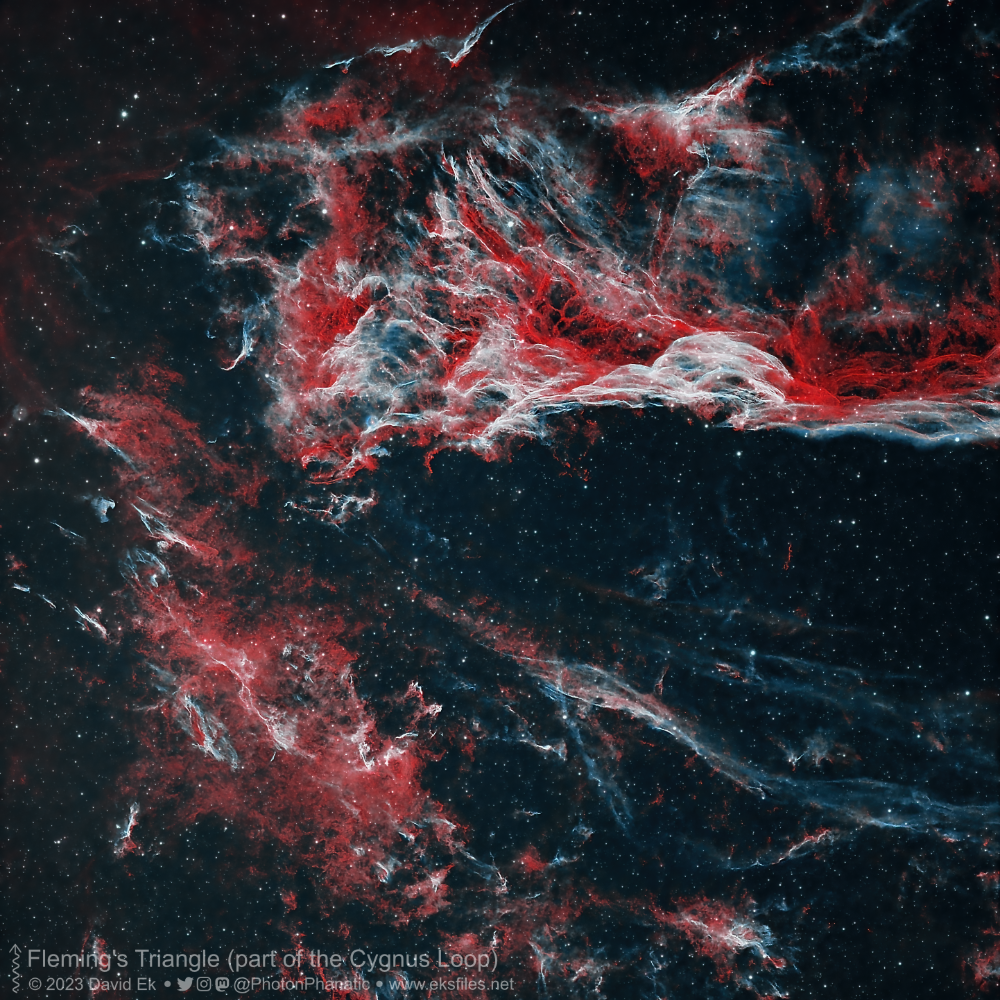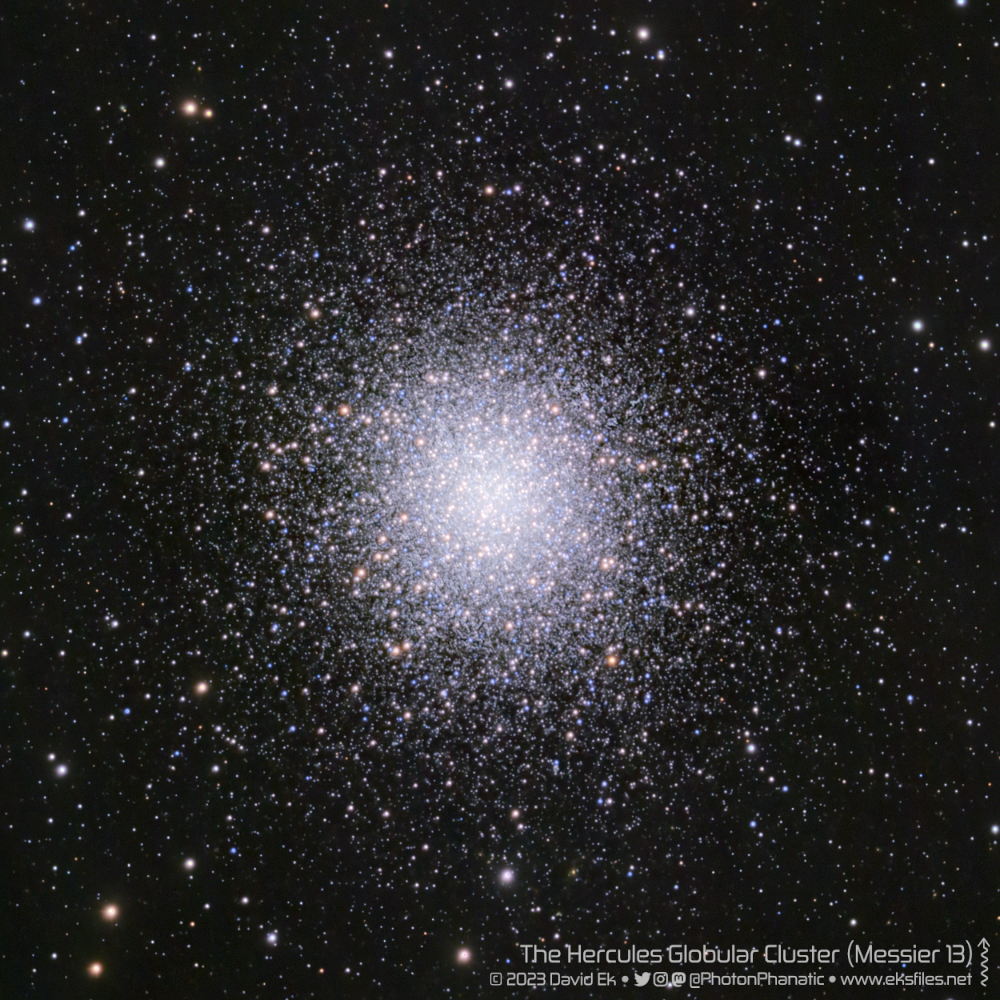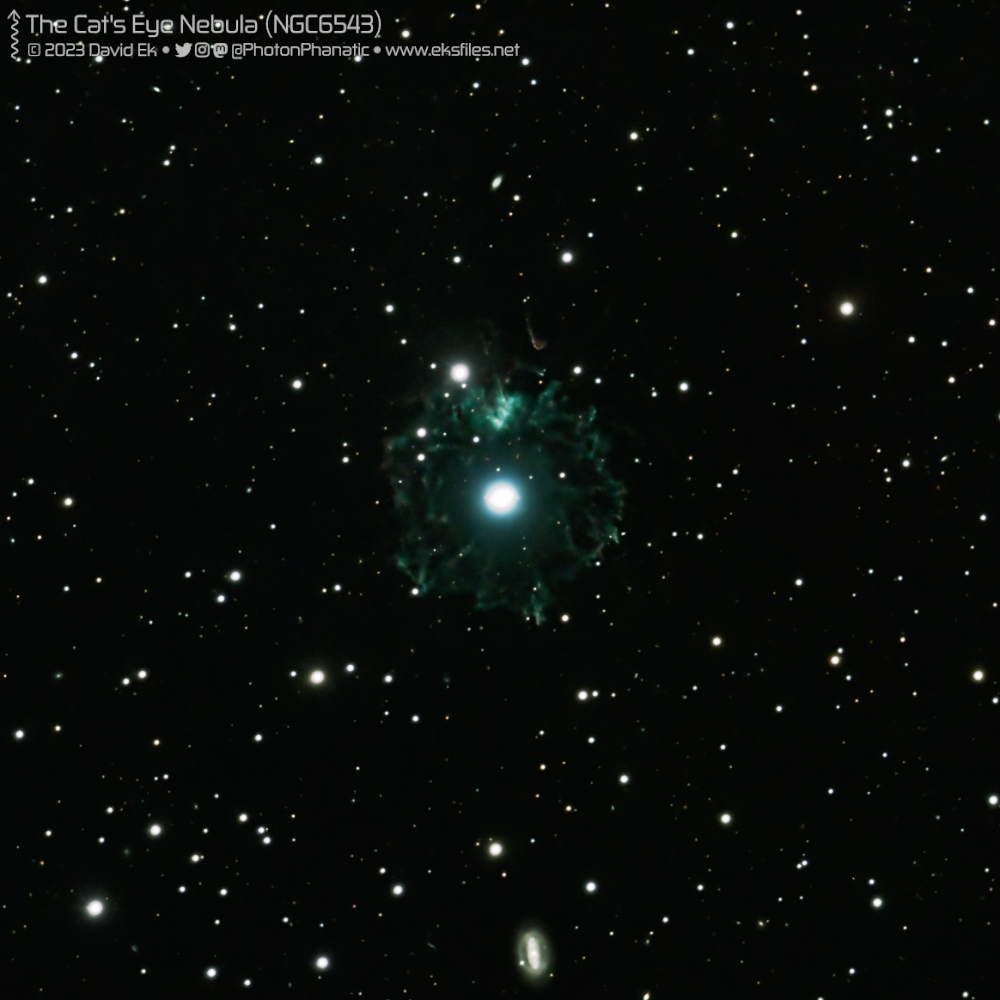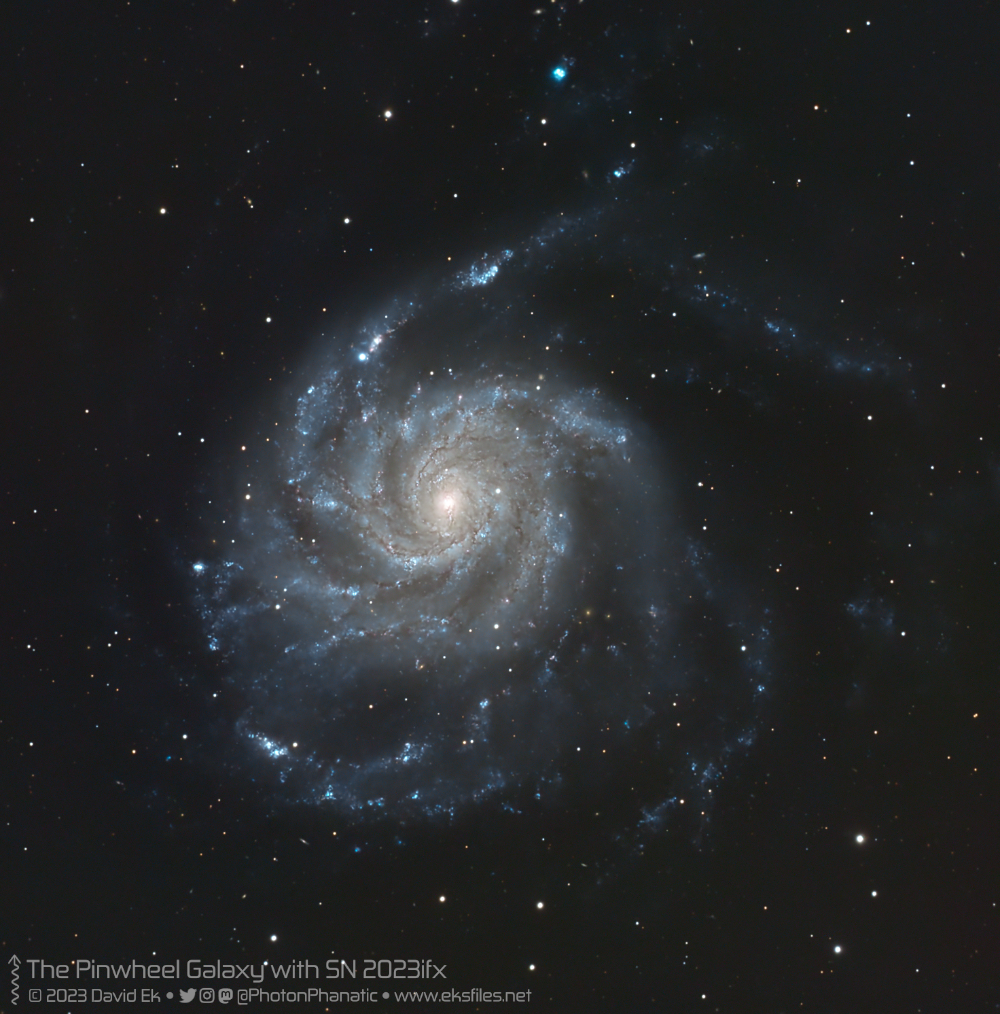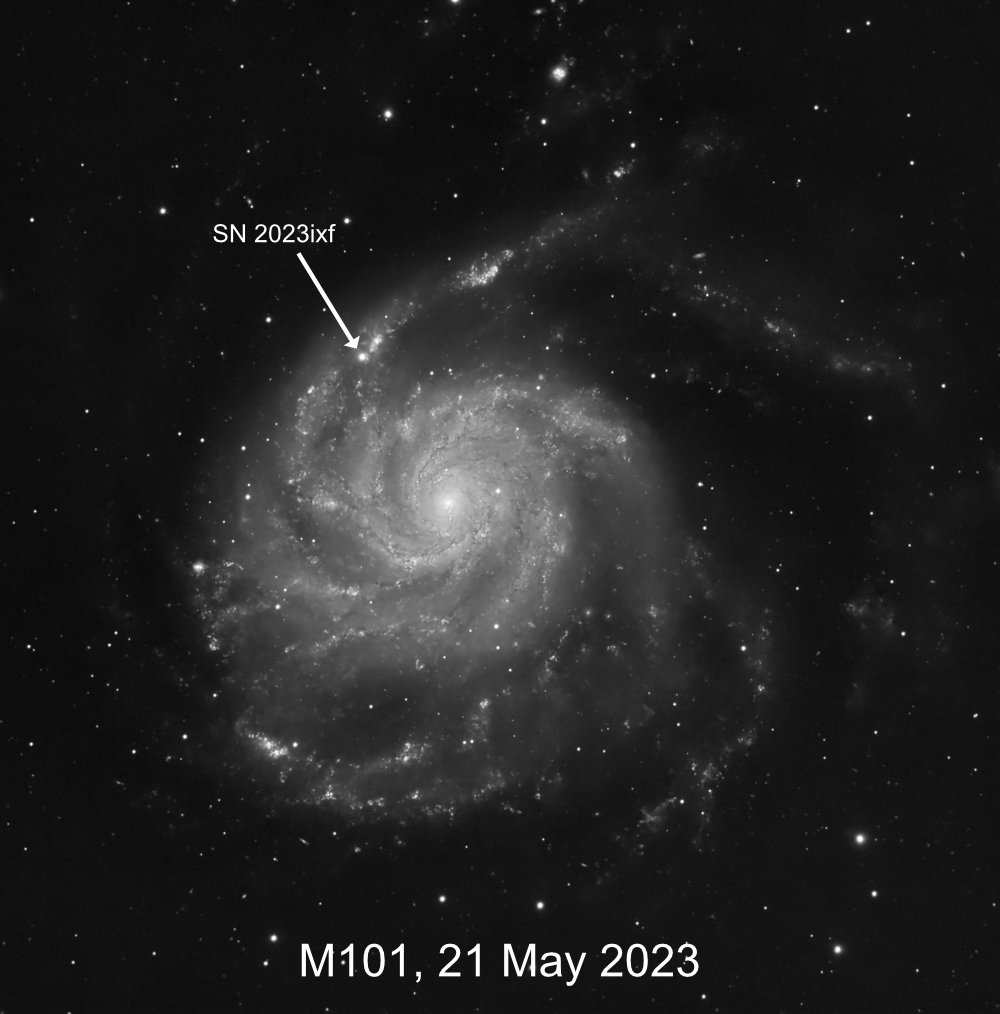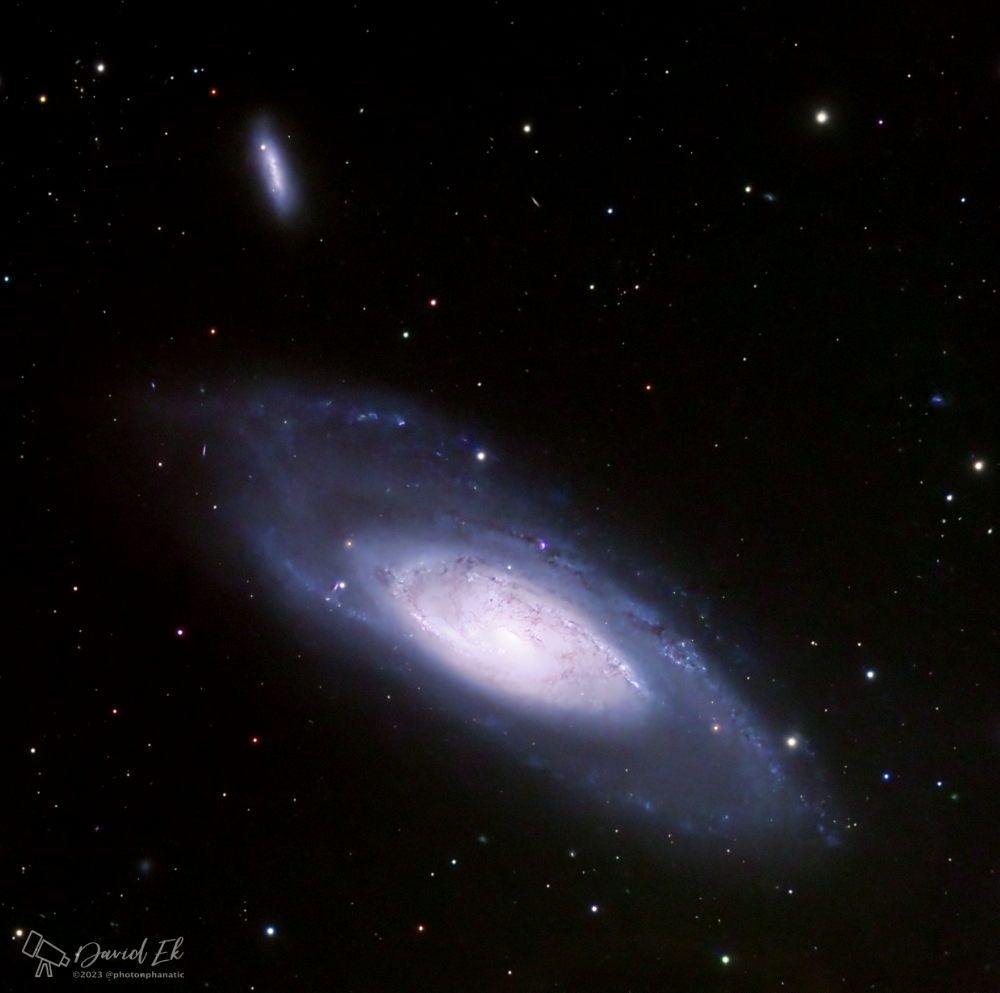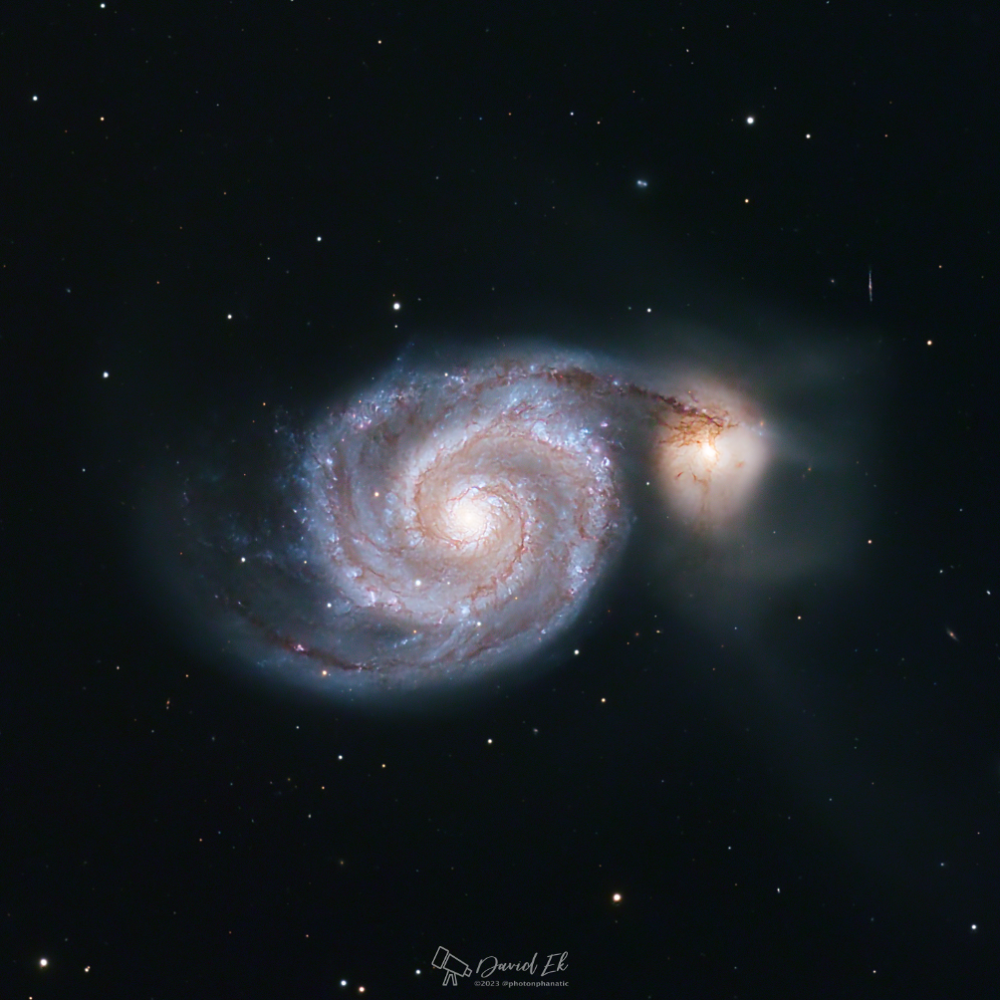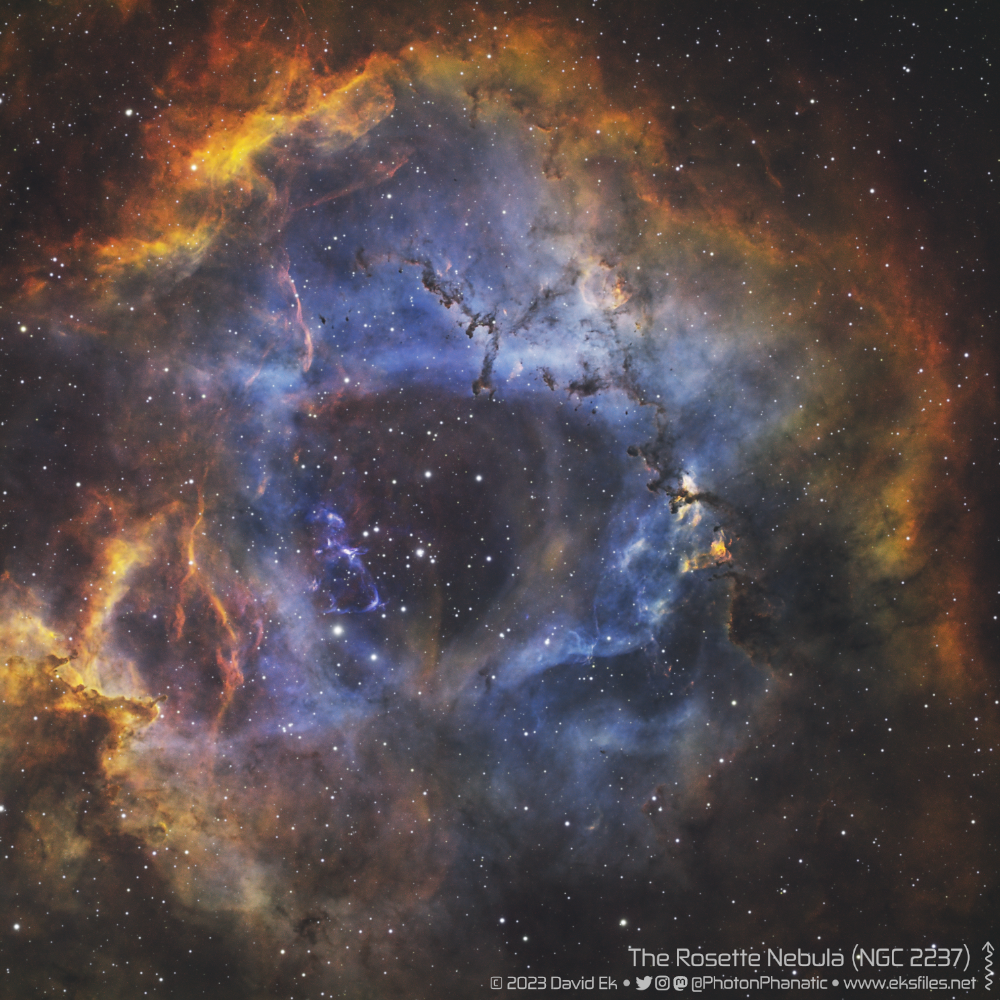I recently found both the Sky-Watcher Evolux 82ED telescope (and its flattener) and the iOptron GEM28 mount on sale for significantly off their regular prices. I was looking for an upgrade for my portable imaging setup (we live in our RV for a few months each winter in warmer climes) and this seemed like a good candidate. I hate not being able to image in the winter–the nights are long and clear and the skies are abundant with great targets. So, I pulled the trigger.
Continue readingCategory Archives: Astronomy
The Hercules Globular Cluster (M13)
Some nights of imaging just don’t go quite the way you planned. I was planning to shoot a different deep-sky object this particular evening, but my off-axis guider was improperly configured due to my own ineptness, and guiding (the process of making minute corrections to the mount’s tracking while shooting an image) was just not working. Rather than fumble around in the dark in the middle of the night, I decided to see if I could shoot shorter unguided exposures and still get something out of the night.
Continue readingThe Cat’s Eye Nebula (NGC6543)
With finally a stretch of a few nights with clear weather here in June, I managed to shoot a few new targets. This one is the Cat’s Eye Nebula, and I shot it with my Celestron C8 using a Starizona SCT reducer/corrector for a net focal length of 1469 mm. This was shot in color using my ASI533MC Pro one-shot color camera. I shot 45 5-minute exposures and processed them using PixInsight and Affinity Photo.
The Pinwheel Galaxy (M101) with SN 2023ixf
I posted previously about supernova 2023 ixf, discovered May 19, 2023 in the Pinwheel Galaxy (M101) in constellation Ursa Major. I was able to capture a few hours of data on this galaxy after the supernova discovery, and included a before-and-after comparison in my original post. Here I present the fully-processed image. I was able to shoot about three hours of 5-minute exposures using LRGB filters through my Celestron C8 with Starizona SCT Corrector IV, for a net focal length of 1470 mm. The images were taken using an ASI533MM Pro mono camera.
Continue readingSupernova 2023ixf in the Pinwheel Galaxy
On May 19th, supernova hunter Koichi Itagawa discovered a new supernova in the Pinwheel Galaxy (M101). Over the next few days the supernova, designated 2023ixf, increased in brightness significantly, and I had a chance to photograph it on the evening of May 21st.
The Pinwheel Galaxy (M101) showing Supernova 2023ixf
Spiral Galaxy M106 Imaged in LRGB
Springtime weather in the Colorado Rockies can be a real adventure. Shorter nights, frequent clouds, and weather that changes quickly can make it a challenging season for astrophotography. The last few weeks have not seen decent conditions for imaging, either because of the weather or the bright moon. So when I saw what looked like a window of opportunity a few days ago, I quickly planned an imaging session and set up my equipment in hopes that I’d be able to get at least a few hours in. This would be my second outing with my Celestron C8 OTA and Starizona SCT Corrector IV, and I was looking forward to the same success I had with this setup when I shot M51 a few weeks ago.
Continue readingM51: First Light for the C8
Last summer I was given a Celestron C8 optical tube assembly (OTA) in partial payment for some freelance coding work (I wrote an ASCOM driver for a product development effort). It wasn’t until this spring after returning from some winter travel that I’ve been able to take the time to set it up for imaging. This is not the EdgeHD version of the C8, but rather the “classic” f/10 version. I didn’t have another scope (aside from the OTA from my Celestron NexStar 6SE, perhaps) that was really suitable for galaxy season, so I was excited to put it into use. Its first image did not disappoint.
Continue readingThe Rosette Nebula in SHO/Hubble Palette
After an extended layoff from astrophotography, the weather and the moon together cooperated for the last two nights to give me a small window to shoot the Rosette Nebula once again, this time using Optolong narrowband filters (6.5-nm bandwidth) for H-alpha, S-II, and O-III. I was able to grab 5.5 hours worth of 5-minute exposures, 22 for each filter, along with the usual dark, flat, dark flat, and bias calibration frames. This was the first image where I was able to use the new BlurXTerminator plugin for PixInsight from RC-Astro, and I have to say I was impressed with what it could do to sharpen the image.
Continue readingThe Elephant’s Trunk Nebula
My second attempt at narrow-band SHO imaging was the Elephant’s Trunk Nebula, IC1396. I’m pretty pleased with the way this one turned out. This go round I shot 10-minute subs instead of 5-minute subs. I was able to shoot a total of 22.5 hours of data (7.5 hours for each of my Optolong narrowband filters–hydrogen-alpha (7 nm), sulfur-II (6.5 nm), and oxygen-III (6.5nm)–through my mono camera, the ZWO ASI533MM Pro. I shot through my Sky-Watcher Esprit 100 f/5.5 refractor on its iOptron GEM45 mount.
Continue readingM31 With a New Portable Imaging Rig
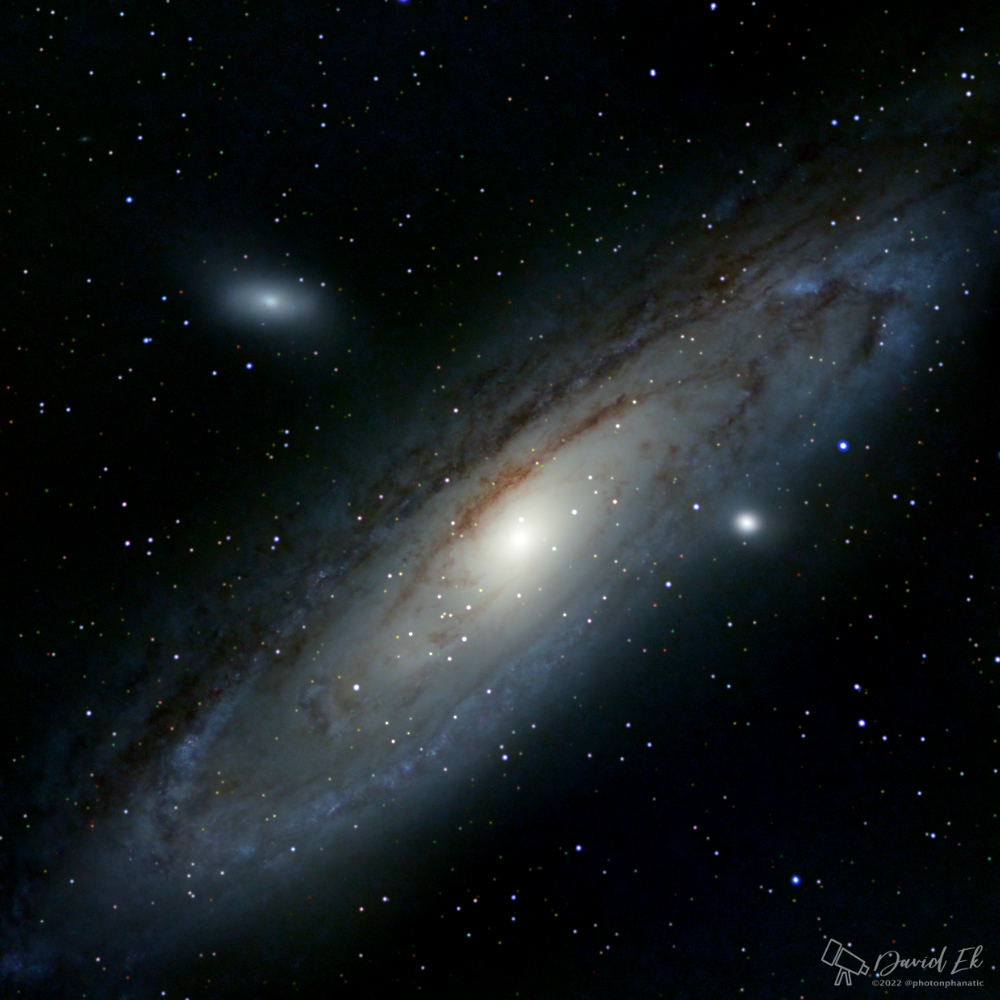
In retirement, my wife and I plan to do some traveling in our Jayco Class C RV, especially during the winter months when we can temporarily relocate to someplace a bit warmer than the Colorado mountains. However, the winter months are the best time of the year for astrophotography, and I wasn’t thrilled about missing the opportunity for some prime imaging. I decided that it would be a good idea to put together a more portable setup for astrophotography–something that could ride along with us without taking up too much space or weight. When Sky-Watcher announced their new full-goto star tracker, the Star Adventurer GTi, I resolved to give it a go.
Continue reading
